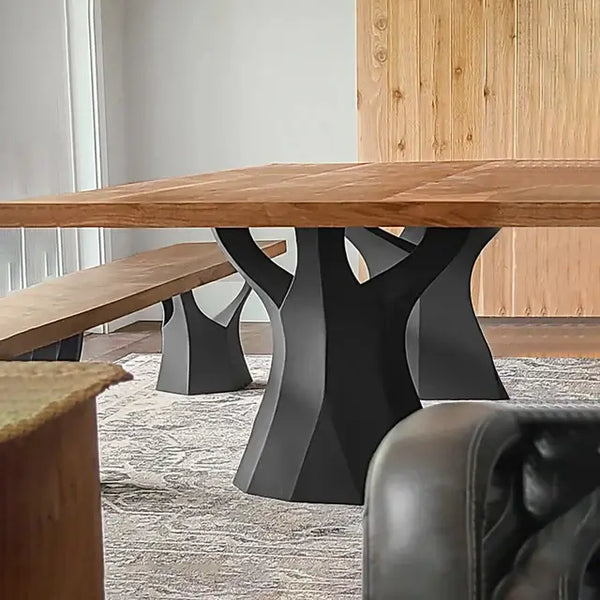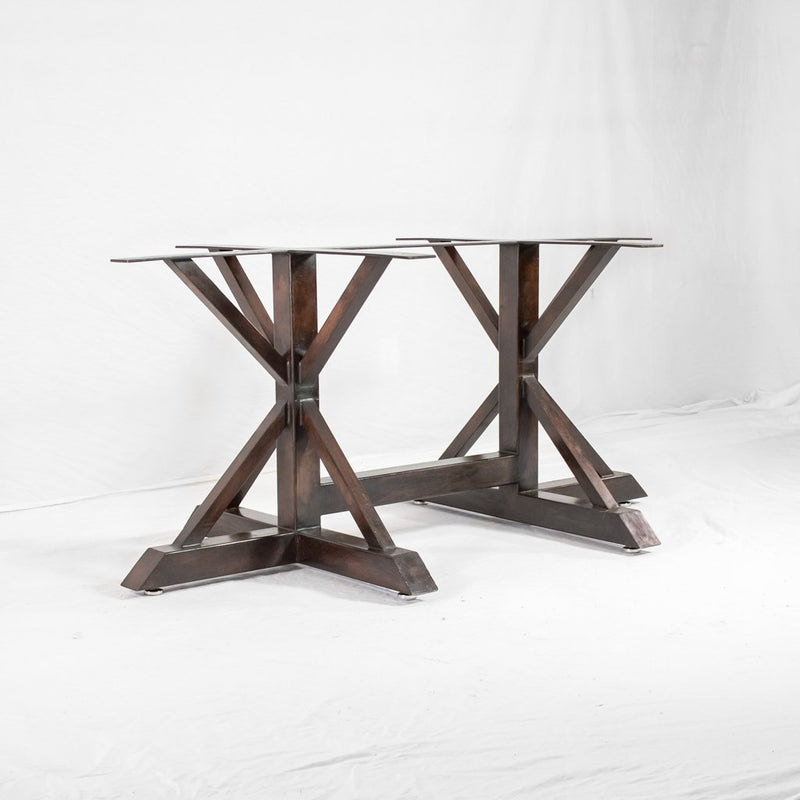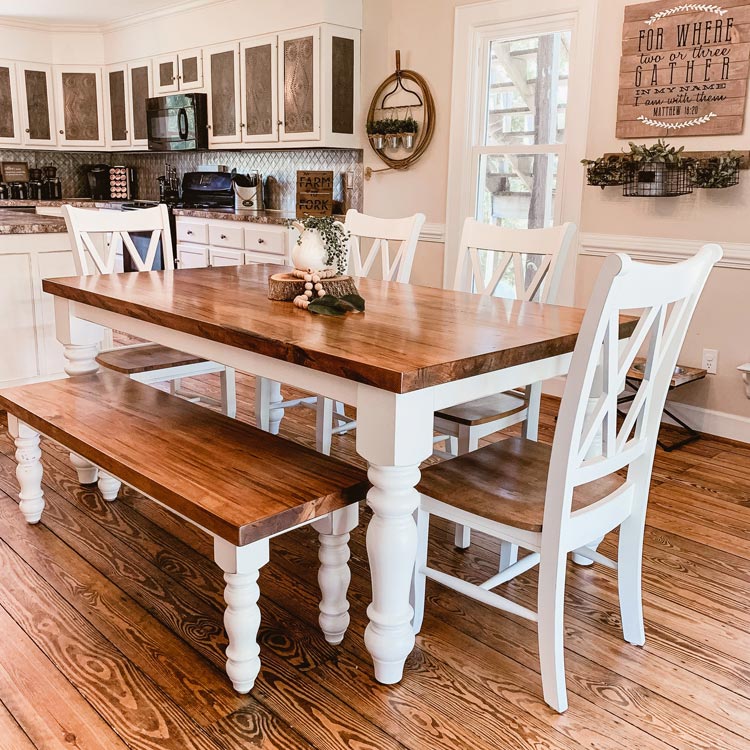The Impact of Dining Room Table Legs on Your Table's Overall Design
The Impact of Dining Room Table Legs on Your Table's Overall Design
Blog Article
Professional Tips for Setting Up Dining-room Table Legs for Maximum Security
When it comes to setting up eating room table legs, attaining optimum stability is extremely important for both performance and aesthetics. What certain strategies can enhance stability also better?
Choose the Right Legs
When choosing the ideal legs for your dining-room table, it is crucial to consider both performance and aesthetics. The legs you select will substantially influence the overall design and stability of the table. Examine the table's intended usage; if you anticipate constant celebrations, tougher legs, such as those made from strong timber or steel, might be a lot more ideal, as they supply boosted durability and support.
Basic dining tables commonly range from 28 to 30 inches in elevation, so guarantee the legs align with this standard for convenience. Tapered legs can include a contemporary touch, while turned legs may convey an extra traditional aesthetic.

Select Appropriate Equipment
Just how can the right hardware improve the stability and long life of your dining-room table? The choice of ideal hardware is vital to ensuring that the legs of your table are securely connected and able to stand up to normal usage. Top quality screws, screws, and braces give the necessary strength to support the weight of the table, in addition to any kind of additional tons put upon it throughout events or dishes.
When picking screws, select those made from durable materials such as stainless steel or brass, which resist rust and preserve stability gradually. The size of the screws is similarly crucial; they need to pass through deeply right into the table's framework without compromising stability. For bolted links, think about utilizing lock washing machines to stop loosening up because of vibration or movement.
Additionally, using edge brackets can add added support, especially for bigger tables or those with much heavier tops. These brackets disperse weight uniformly and help keep the table's shape. Ensuring that the equipment you choose is appropriate for the details materials of your table will certainly additionally enhance its total stability and longevity, enabling you to enjoy your eating experience for years ahead.
Ensure Appropriate Alignment
Appropriate placement of dining space table legs is essential for both aesthetic allure and functional stability. To accomplish optimum alignment, begin by gauging the range from the table's corners to the leg accessory points.
Use a degree throughout installation to confirm that each leg is vertical to the table top. This Check This Out action is crucial, as even minor disparities can rise into significant stability problems gradually. It is suggested to note the desired leg positions on the bottom of the table with a pencil or concealing tape before protecting them. This technique acts as a visual overview, enabling changes as needed.
Additionally, verify the placement after the first screws are tightened up, as modifications might be needed prior to completely protecting the hardware. By prioritizing proper anchor placement, you not just boost the table's total style however likewise guarantee that it remains useful and secure for several years to find.

Consider Weight Circulation
After making sure appropriate alignment of the eating space table legs, it is necessary to take into consideration weight circulation to enhance security and performance. dining room table legs. Correct weight circulation is essential in protecting against tottering and ensuring that the table can sustain its intended load without risk of tipping or falling down
When positioning the legs, ensure they are placed at equal distances from the facility of the table to evenly disperse the weight across the framework. Consider the weight of the table top and any things that will frequently hinge on it, such as decorative items or tabletop appliances. Tables with larger surfaces must preferably have legs positioned closer to the edges, as this takes full advantage of the base of assistance and reduces the danger of instability.
Additionally, if the table is meant for usage in a high-traffic location, consider utilizing much heavier products for the legs or adding stabilizing aspects, such as cross-bracing or a reduced rack - dining room table legs. These changes can help preserve equilibrium and protect against shifting during usage. Inevitably, a well-considered weight circulation strategy will substantially boost the table's total efficiency, ensuring it remains a eye-catching and useful focal point for your eating space
Test Stability Before Use
Evaluating the stability of the dining area table prior to use is an important step that should not be overlooked. If the table reveals instability, determine the legs or joints that may require change.
Next, check that all screws and bolts are tightened properly. Loosened connections can lead to instability and possible damage over time. If essential, utilize wood adhesive on joints to improve security, making sure to enable adequate drying out time.

Verdict
In conclusion, the setup this post of dining-room table legs needs mindful consideration of materials, weight, equipment, and placement distribution to accomplish optimum stability. By selecting strong legs and high-quality fasteners, guaranteeing exact placement, and dispersing weight equally, the architectural integrity of the table can be considerably improved. Carrying out a stability test prior to routine use additionally makes sure that the table will certainly hold up against day-to-day stress, thereby providing a dependable and risk-free dining experience.
When it comes to setting up dining room table legs, attaining maximum stability is critical for both performance and aesthetic appeals. The legs you select will significantly affect the general layout and stability of the table (dining room table legs). Conventional eating tables generally vary from 28 to 30 inches in elevation, so make sure the legs line up with this requirement for comfort.Correct placement of dining room table legs is important for both aesthetic allure and practical stability.In conclusion, the installment of dining room table legs calls for cautious consideration of products, equipment, weight, and placement distribution to attain optimum stability
Report this page